Renzotech cloud chamber (Part 2: technical details)
21 Oct 2013## Some technical difficulties
- Make some supersaturated vapour in your living room
What we want is some substance that can be in this state, reasonably near the conditions of a living room. Almost all of the sources I’ve stumbled upon use ethanol. Cheap and available. Unfortunately, it requires temperatures below a rough -35°C.
- Cooling
-35° is pretty cold. DIY-sciencists from the Web often use dry ice, because of its so-called high availability, especially in the month of october. This isn’t true all the time outside the USA. Moreover, when all your dry ice has turned to gas, you lose all the cool.
This site was the first I crawled where they used peltier modules to cool our alcohol. They create a temperature difference (Δ) between the two sides. Keep the ‘hot’ side at a temperature T°C, and it’ll pump juice to try to keep the ‘cold’ side at (T-Δ)°C. Two of them stacked are reported to work fine. They are made in china and I could buy 4 TEC-12710 for ~20€, and have a convenient size: roughly the bottom of a CPU heatsink.
- Air-tight box
Since the cold area is going to be small, supersaturation will happen very close to the cold plate described earlier. Air inside needs to be able to set. I’ve decided to build my own PVC box, which happened to be a very bad idea, and just glue-gun everything that didn’t need to move to make an air-tight enclosure.
- High energy particle source
A radioactive source will do. α and β decays qualify. My source is americium 241 americium-241 salvaged from a smoke detector (search for an ionization chamber smoke detector on ebay). Try to stay away from very cheap models from china that can be wrongly advertised as using a ionization chamber (I’m looking at you SS-168 from dealextreme ). I got mine off a UK based store on ebay for ~15€. It’s a small, cheap and reliable α radiation source. If you’ve watched the beer cup video from earlier, you know some of that kind of particles actually travel our space all the time. They are free, but happen less frequently, always randomly, and usually create fainter clouds.
- Power supply and casing
The peltier modules can use as much as 9 amps under 12V, so we need a pretty strong power supply. I’ve already decided to use a CPU heatsink, so let’s just salvage an old ATX case with a cheap supply, and fit everything there.
- Proper lighting
The fleeting clouds will be dim. The only way to make them stand out, is to light your box from behind, with a very horizontal stream of light. I use one of these.
Assemble stuff together
The pictures are pretty self-explanatory.
First find an old case (can be found on the pavement)
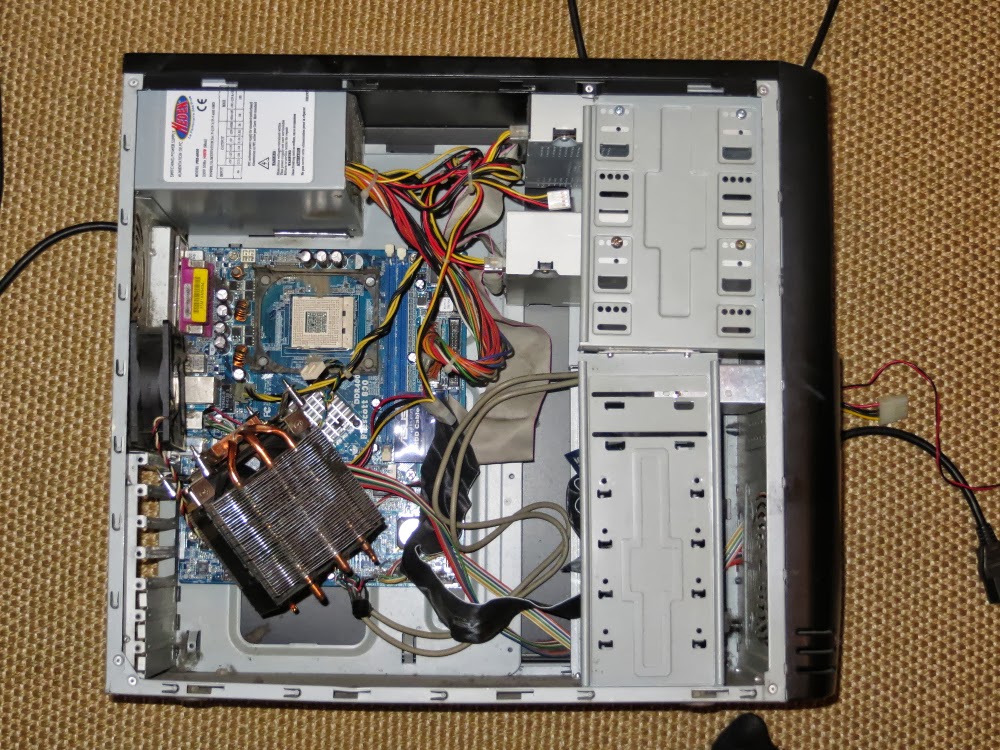
Remove everything we don’t need. This means everything that’s not a PSU, a heatsink. Also get rid of and half the case.
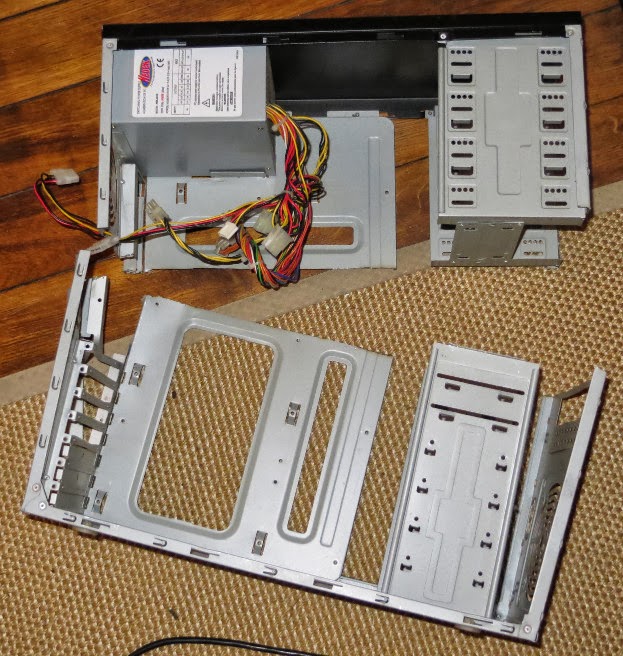
Add some shoring, and screw the heatsink where there’s room
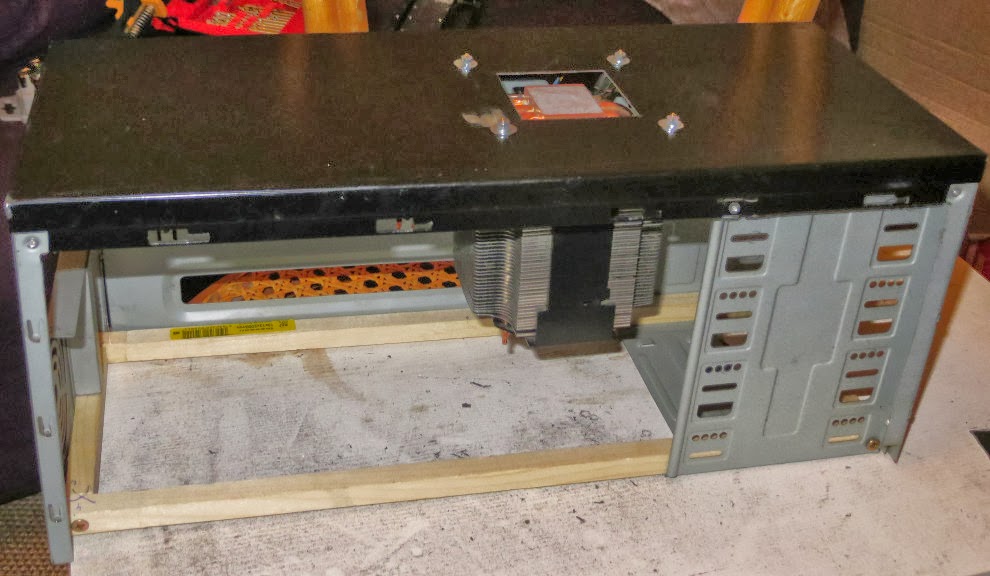
Add the two peltier modules “hot side down”, with some thermal grease between them and the heatsink (toothpaste can work for some first tests, but tends to dry too quickly).
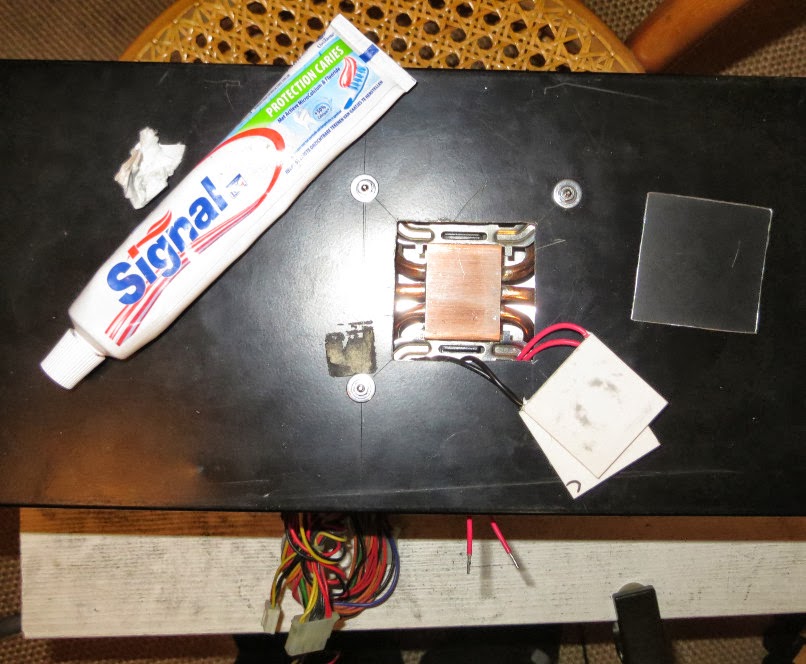
Here is the setup in operating mode.
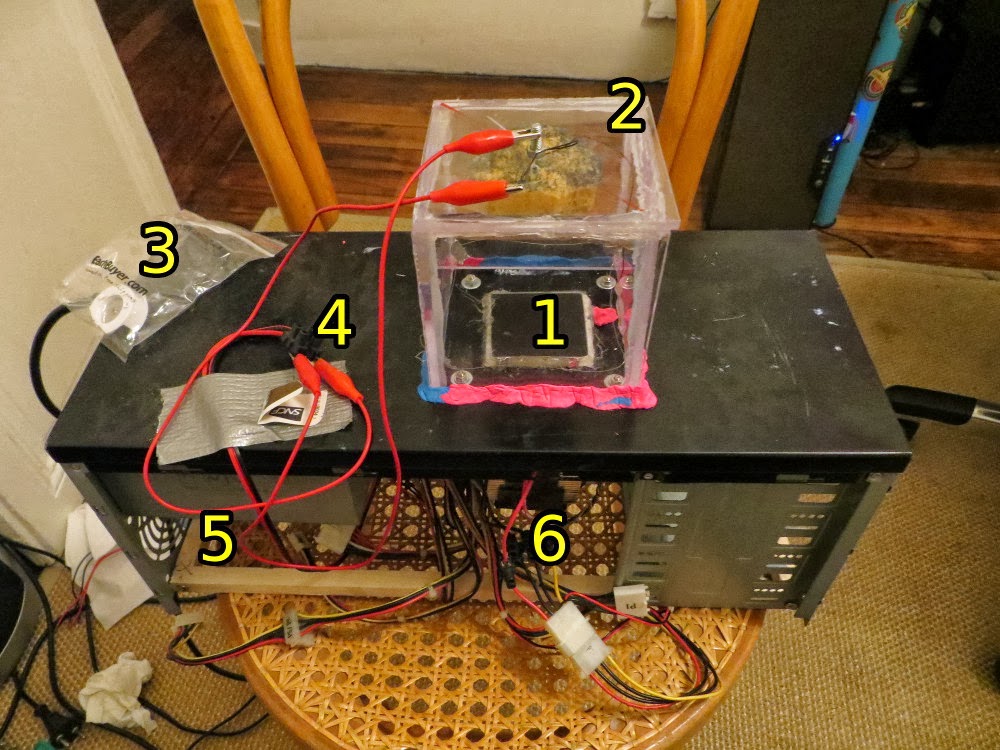
1 - Cold plate, where stuff happens - 2 - Plexiglas box. With sponge and bolt. - 3 - Radioactive source. Scavenged from a smoke detector - 4 - Some high voltage (here, ~250V) - 5 - PSU - 6 - Peltier modules wires
## Starting it up
- Open the box, and pour some alcohol on the sponge. I’ve successfully used 90% alcohol from the drugstore. I usually pour enough so it’ll start to drip. Add your radioactive source if you got one. Alpha particles can’t travel so far through the air, so put it close to the cold plate.
- Wire it all up. Top peltier plate should be connected to the 5V rail, and the bottom one to a 12V rail. A quick test showed the 2 modules stack wouldn’t be able to cool down the metal plate enough if both are connected to two 12V rails. I guess it’s because the bottom one can’t transfer the heat from the top one quick enough. Also it’s handy to have them use just one molex plug. Don’t forget to connect the fan of the heatsink.
- Applying some strong electric field is optional but recommend). I mean it’s recommended to have live highvoltage wire running around in an alcohol supersaturated environment, that’s all. I’ve used a simple ~400V generator that I hacked into the PSU. I also added a switch. You can also just use any kind of staticly charged thing, like a plastic cup. I have yet to play with different voltages.
- Caulk every hole, and wait a few minutes for the gases inside the box to set.
- Boot it all up ! The heatsink fan should start, and you should be able to see tiny droplets of alcohol gathering on the top of the plate.
- Set your light source so it’s leveled with the cold plate, and illuminating from behind.
- Be amazed. Or disappointed.
Future research & TODOs
- Check whether vodka is a good replacement for 90% alcohol. (spoiler: it isn’t)
- Play with high voltage field inside the box. I’ve noticed that applying some voltage field inside makes the clouds thicker. I could also instanly make a fleeting cloud by approaching a charged plastic ruler near the top bolt.
- Get some strong magnets to also have a strong magnetic field for the charged particles to play with.
- Use led-strips for a nice lighting from every sides.
- Make a smaller transparent box, made of glass to prevent scratches.
- Use different sources for ionizing radiation.
- Be a little more scientific, as in “more formulas and graphs”